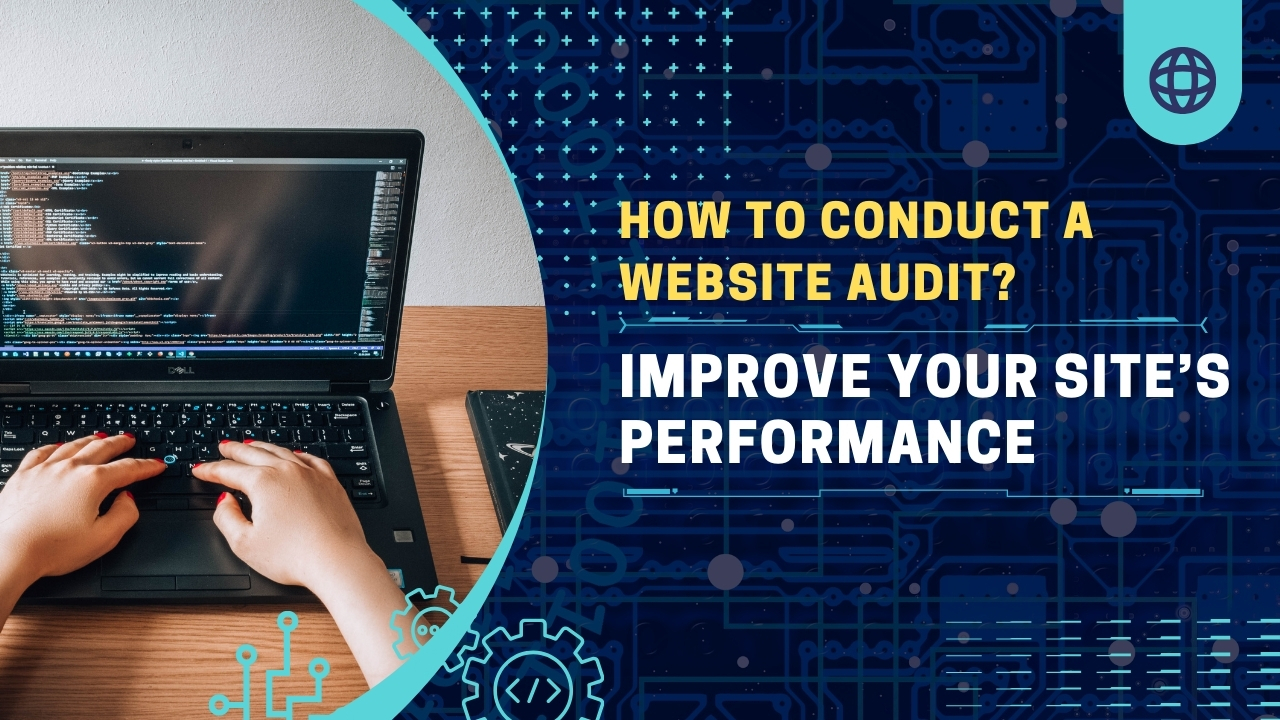A website audit is a comprehensive evaluation of a website’s performance, functionality, and compliance with best practices. It involves analyzing various aspects of a website to identify strengths, weaknesses, and areas for improvement. This process is crucial for ensuring that your site operates efficiently, delivers a positive user experience, and meets your business goals. In this guide, we will delve into the essential steps and strategies for conducting a thorough website audit to enhance your site’s performance.
Understanding the Importance of a Website Audit

Conducting a website audit is an essential practice for any organization looking to optimize its online presence. A website audit provides a detailed analysis of your site’s performance, uncovering areas that require improvement to enhance user experience and search engine rankings. It is not just a one-time task but an ongoing process to ensure your website stays up-to-date with the latest technological advancements and SEO best practices.
A thorough audit examines various components, including technical aspects, on-page SEO, user experience, content quality, and more. By identifying issues early, you can address them before they negatively impact your site’s performance or user satisfaction. Regular audits help in maintaining a competitive edge, improving load times, and ensuring your content remains relevant and engaging. This proactive approach is key to adapting to the ever-evolving digital landscape and achieving long-term success.
Preparing for the Audit
Before diving into the specifics of the audit, it’s crucial to prepare adequately. Preparation involves setting clear objectives for what you want to achieve through the audit. This could range from improving site speed to increasing organic traffic or enhancing user engagement.
- Define Goals: Clearly outline what you aim to accomplish with the audit. Are you focusing on SEO, user experience, or content quality?
- Gather Tools: Utilize various auditing tools and software such as Google Analytics, SEMrush, Ahrefs, and Screaming Frog SEO Spider.
- Compile Data: Collect data on current website performance, including traffic reports, bounce rates, and conversion metrics.
- Form a Team: Assemble a team of experts or consultants who can contribute to different aspects of the audit.
Proper preparation ensures that the audit process is smooth and that you can address all relevant aspects of your website.
Technical SEO Audit

A technical SEO audit is fundamental for ensuring that your website meets search engine requirements and provides a seamless experience for users. This section focuses on evaluating your site’s technical health, which significantly impacts its visibility and performance.
Site Speed and Performance
Site speed is a critical factor affecting both user experience and search engine rankings. A slow-loading website can lead to higher bounce rates and lower conversion rates. To evaluate site speed:
- Run Speed Tests: Use tools like Google PageSpeed Insights, GTmetrix, or Pingdom to assess loading times and performance.
- Check for Issues: Identify elements that slow down your site, such as large images, unoptimized code, or excessive server requests.
- Optimize Performance: Implement solutions like image compression, code minification, and browser caching to enhance speed.
Also Read: How to Drive Organic Traffic with Long-Tail Keywords?
Mobile Responsiveness
With the increasing use of mobile devices, ensuring your website is mobile-friendly is crucial. A mobile-responsive design adapts to various screen sizes and provides a consistent user experience across devices.
- Test Mobile Compatibility: Use Google’s Mobile-Friendly Test tool to evaluate how well your site performs on mobile devices.
- Review Design Elements: Ensure that buttons, text, and images are appropriately sized and accessible on smaller screens.
- Optimize Layouts: Adjust layouts and navigation to enhance usability for mobile users.
Secure Sockets Layer (SSL) Certificate
An SSL certificate is essential for securing data transferred between your website and its visitors. It also affects your site’s credibility and search engine rankings.
- Check SSL Status: Verify that your site has a valid SSL certificate and that it covers all pages.
- Ensure HTTPS: Confirm that all pages on your site are accessible via HTTPS rather than HTTP.
- Update Links: Ensure internal and external links use HTTPS to maintain security and consistency.
On-Page SEO Analysis

On-page SEO involves optimizing individual pages on your website to improve their search engine rankings and relevance. This section covers the key components of on-page SEO that you should analyze during the audit.
Content Quality and Relevance
High-quality, relevant content is essential for both user engagement and search engine optimization. Evaluate your content to ensure it meets the following criteria:
- Relevance: Content should be relevant to your target audience and aligned with your keywords.
- Originality: Avoid duplicate content and ensure that your content offers unique value to readers.
- Engagement: Use engaging formats such as videos, infographics, and interactive elements to enhance user interaction.
Meta Tags and Descriptions
Meta tags and descriptions play a vital role in search engine optimization and user click-through rates. Review these elements to ensure they are optimized effectively.
- Title Tags: Check that title tags are unique, descriptive, and include relevant keywords.
- Meta Descriptions: Ensure meta descriptions are compelling and provide a clear summary of the page content.
- Header Tags: Verify that header tags (H1, H2, H3) are used appropriately to structure content and include relevant keywords.
Internal Linking Structure
An effective internal linking structure helps users navigate your site and distributes page authority throughout your website. Analyze your internal linking practices to improve site usability and SEO.
- Review Link Density: Ensure that important pages are linked frequently and contextually throughout your site.
- Check for Broken Links: Identify and fix any broken internal links that could negatively impact user experience.
- Optimize Anchor Text: Use descriptive and relevant anchor text for internal links to enhance SEO and user navigation.
Also Read: How to Write Compelling Headlines That Boost Click-Through Rates in 2024
User Experience (UX) Evaluation
User experience (UX) plays a crucial role in retaining visitors and encouraging conversions. A positive UX leads to higher user satisfaction and better engagement metrics.
Navigation and Usability
Effective navigation is essential for helping users find information quickly and easily. Evaluate your site’s navigation to ensure it is intuitive and user-friendly.
- Analyze Menu Structure: Ensure that the menu is logically organized and includes clear labels for each section.
- Review Search Functionality: Verify that the search feature is working correctly and returning relevant results.
- Test User Flows: Evaluate common user flows, such as completing a purchase or finding contact information, to identify any obstacles.
Visual Design and Layout
The visual design and layout of your site contribute to overall user satisfaction and engagement. Assess these elements to ensure they enhance the user experience.
- Evaluate Aesthetics: Ensure that the design is visually appealing and aligns with your brand identity.
- Check Readability: Confirm that text is easy to read with appropriate font sizes, line spacing, and contrast.
- Optimize Layout: Review the layout for clarity and organization, ensuring that important elements are prominently displayed.
Content Audit

A content audit helps you assess the effectiveness of your content and identify opportunities for improvement. This section focuses on evaluating content accuracy, freshness, and engagement.
Content Accuracy and Freshness
Maintaining accurate and up-to-date content is essential for credibility and relevance. Regularly review your content to ensure it is current and accurate.
- Verify Information: Check that all factual information is correct and sources are reliable.
- Update Content: Refresh outdated content to reflect the latest developments and trends.
- Remove Obsolete Content: Identify and remove content that is no longer relevant or useful.
Readability and Engagement
Content should be easy to read and engaging to capture and retain user interest. Assess readability and engagement to improve content effectiveness.
- Analyze Readability: Use tools like Hemingway or Grammarly to evaluate readability and simplify complex text.
- Measure Engagement: Review metrics such as time on page, bounce rates, and social shares to gauge content engagement.
- Incorporate User Feedback: Collect and analyze user feedback to identify areas for content improvement.
Also Read: How to Speed Up Your WordPress Site: Tips and Plugins (2024)
Backlink Profile Analysis

Backlinks are a significant factor in search engine rankings and domain authority. Analyzing your backlink profile helps you understand the quality and relevance of your site’s backlinks.
Quality of Backlinks
High-quality backlinks from authoritative sources can positively impact your SEO efforts. Evaluate the quality of your backlinks to ensure they contribute to your site’s credibility.
- Review Linking Domains: Analyze the domains linking to your site and their authority levels.
- Assess Link Relevance: Ensure that backlinks come from relevant and related websites.
- Disavow Harmful Links: Identify and disavow any toxic or spammy backlinks that could harm your site’s reputation.
Toxic Links and Disavowal
Toxic backlinks can negatively impact your site’s performance and search rankings. Use tools and strategies to address harmful links.
- Identify Toxic Links: Use tools like Ahrefs or SEMrush to detect low-quality or harmful backlinks.
- Disavow Links: Create and submit a disavow file to Google to disassociate your site from toxic backlinks.
- Monitor Regularly: Continuously monitor your backlink profile to prevent the accumulation of harmful links.
Competitor Analysis

Analyzing competitors helps you understand their strategies and identify opportunities for improvement. This section covers the process of conducting a competitive analysis to enhance your site’s performance.
Identifying Competitors
Identifying your competitors provides insights into their strengths and weaknesses. Start by researching your industry and market to find key competitors.
- List Key Competitors: Compile a list of direct and indirect competitors in your industry.
- Analyze Their Strategies: Review competitors’ websites, content, and SEO strategies to identify their strengths and weaknesses.
- Benchmark Performance: Compare your site’s performance metrics with those of your competitors to identify areas for improvement.
Benchmarking and Gap Analysis
Benchmarking and gap analysis help you measure your site’s performance against competitors and identify opportunities for growth.
- Evaluate Metrics: Compare key metrics such as traffic, rankings, and engagement with competitors.
- Identify Gaps: Analyze areas where competitors excel and where your site may be lacking.
- Develop Strategies: Create strategies to address performance gaps and capitalize on opportunities.
Also Read: Content Marketing 101: How to Create a Successful Strategy?
Analytics and Tracking

Analytics and tracking provide valuable insights into your site’s performance and user behavior. Proper setup and analysis are crucial for informed decision-making.
Google Analytics Setup
Google Analytics is a powerful tool for tracking and analyzing website performance. Ensure that it is properly set up and configured.
- Install Tracking Code: Verify that the Google Analytics tracking code is correctly installed on all pages.
- Set Up Goals: Configure goals and conversions to track key user actions and objectives.
- Monitor Reports: Regularly review reports to analyze traffic, user behavior, and conversion rates.
Conversion Tracking
Tracking conversions helps you measure the effectiveness of your site in achieving business goals. Implement conversion tracking to optimize performance.
- Define Conversion Goals: Identify key conversion goals, such as form submissions, purchases, or downloads.
- Track Conversions: Use Google Analytics or other tools to monitor conversion rates and performance.
- Optimize Strategies: Adjust strategies based on conversion data to improve results and achieve objectives.
Creating an Action Plan
An action plan outlines the steps to address identified issues and implement improvements. Creating a structured plan is essential for effective execution.
Prioritizing Issues
Prioritizing issues helps you focus on the most critical areas for improvement. Evaluate and rank issues based on their impact and urgency.
- Assess Impact: Determine the potential impact of each issue on performance and user experience.
- Evaluate Urgency: Consider the urgency of addressing each issue based on its significance.
- Create a Prioritized List: Develop a list of issues ranked by importance and address them systematically.
Implementing Changes
Implementing changes involves executing the action plan and making necessary improvements to enhance site performance.
- Assign Tasks: Allocate tasks to team members or stakeholders responsible for implementing changes.
- Monitor Progress: Track progress and ensure that changes are implemented according to the plan.
- Evaluate Results: Assess the impact of changes and make adjustments as needed.
Also Read: Top 5 Website Builders Compared: Which One is Right for You?
Monitoring and Continuous Improvement
Continuous monitoring and improvement are essential for maintaining optimal site performance and adapting to changes.
Regular Audits
Regular audits help you stay on top of performance issues and ensure ongoing optimization. Schedule regular audits to review and improve your site.
- Set Audit Schedule: Establish a regular audit schedule, such as quarterly or biannually.
- Conduct Reviews: Perform comprehensive audits to assess performance and identify new issues.
- Implement Updates: Make necessary updates and improvements based on audit findings.
Adapting to Changes
The digital landscape is constantly evolving, and adapting to changes is crucial for maintaining a competitive edge.
- Stay Informed: Keep up-to-date with industry trends, algorithm updates, and best practices.
- Adjust Strategies: Modify strategies based on changes in the digital environment and audit results.
- Embrace Innovation: Explore new technologies and approaches to enhance site performance and user experience.
Must Read: Elementor vs Divi Builder: A Comprehensive Comparison for WordPress Users (July 2024)
FAQ
How often should I conduct a website audit?
It is recommended to conduct a website audit at least once every six months or annually. Regular audits help identify issues early and ensure ongoing optimization.
What tools are best for conducting a website audit?
Popular tools for website audits include Google Analytics, SEMrush, Ahrefs, Screaming Frog SEO Spider, and GTmetrix. These tools provide comprehensive insights into various aspects of your website’s performance.
How do I prioritize issues found during a website audit?
Prioritize issues based on their impact on performance and user experience. Focus on high-impact and urgent issues first, and then address less critical problems.
Can I perform a website audit on my own or should I hire a professional?
While you can perform a website audit on your own using available tools, hiring a professional can provide a more in-depth analysis and expert recommendations. Professionals can offer specialized knowledge and experience for more effective results.
What are the benefits of regular website audits?
Regular website audits help maintain optimal performance, improve user experience, adapt to changes, and stay competitive. They ensure that your site remains up-to-date with best practices and continues to meet your business goals.


